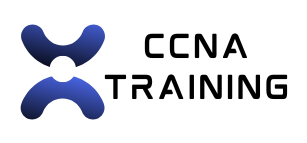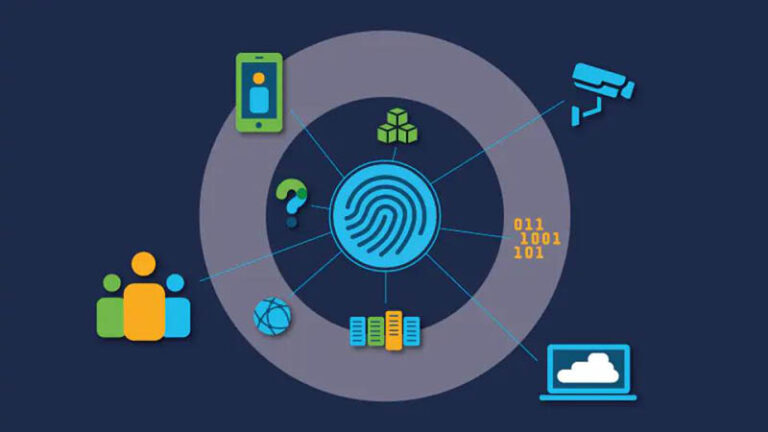Let me tell you about something that happened last week. I was talking to my neighbor’s kid—a 17-year-old who just passed his CCNA exam. This is the same kid who, two years ago, couldn’t tell you the difference between a router and a switch. Now? He’s fielding job offers before he’s even picked up his high school diploma.
This isn’t some isolated success story. It’s happening in high schools everywhere, and honestly, it’s about time.
Remember When “Computer Class” Meant Learning to Type?
We’ve come a long way from teaching kids how to make PowerPoints and format Word documents. Today’s high schoolers are diving into enterprise-level networking concepts that used to be reserved for college grads and IT professionals. They’re learning about VLANs, subnet masks, and routing protocols—the actual nuts and bolts of how the internet works.
Here’s the thing: while we were all arguing about whether kids spend too much time on their phones, some smart educators figured out that maybe we should teach them how those phones actually connect to the world. Revolutionary, right?
The CCNA certification isn’t just another piece of paper. It’s a legitimate, industry-recognized credential that can land you a $50,000+ job straight out of high school. Compare that to the mountain of student loan debt most college kids are taking on, and suddenly this whole thing starts making a lot more sense.
Why Teenagers Are Actually Perfect for This Stuff
Look, I’ve taught both teenagers and adults, and let me tell you—teenagers have some serious advantages when it comes to learning networking. They’re not afraid to break things (virtually, of course). They’ll spend three hours troubleshooting a lab just because they want to figure it out. Try getting a 35-year-old with a mortgage and two kids to show that kind of dedication to a practice lab.
Plus, these kids grew up with technology. They’re not intimidated by command-line interfaces or complex diagrams. I watched a group of juniors set up a multi-site network using Cisco Packet Tracer like they were playing Minecraft. It’s honestly kind of amazing.
Let’s Talk About What’s Actually Happening in These Programs
So here’s how it typically works (and trust me, I’ve visited enough of these programs to know). Most schools run a two-year pathway. Year one is your basics—think CompTIA Network+ level stuff. Students learn what an IP address actually is, how data travels across networks, basic security concepts. It’s foundation work, but it’s solid.
Year two is where things get serious. That’s full CCNA territory. We’re talking about configuring routers, setting up VLANs, implementing security protocols. One school I visited in Texas had kids managing a live network for a local nonprofit. Real equipment, real problems, real solutions.
The best part? Schools are getting creative with resources. Can’t afford a full rack of Cisco equipment? No problem—virtual labs and simulators work just fine. Some programs are even using EVE-NG for more advanced simulations.
The Kids Who Never Thought They Were “College Material”
This is where I get a little emotional about these programs. I met a student named Marcus last year. Smart kid, but struggled with traditional academics. His counselor suggested the networking program as an elective. Fast forward 18 months, and Marcus not only passed his CCNA but landed an internship with a regional ISP. He’s making more than his teachers now, and he hasn’t even turned 19.
These programs are creating pathways for kids who might’ve fallen through the cracks otherwise. Not everyone needs to go to a four-year university, and we need to stop pretending they do. Some kids are ready to work, ready to earn, ready to build careers. Modern vocational programs like CCNA training give them that chance.
Yeah, But What About the Teachers?
Here’s a challenge nobody really talks about: finding teachers who can actually teach this stuff. You can’t just hand a traditional computer science teacher a CCNA textbook and say “good luck.” Schools that are doing this right invest heavily in teacher training.
I know one district that sends their instructors to Cisco Networking Academy instructor training every summer. Another school partnered with the local community college to share instructors. And honestly? Some of the best programs I’ve seen bring in part-time instructors from industry. Sure, they might not have teaching degrees, but they know their stuff and kids respect that real-world experience.
The Money Question (Because Someone Has to Ask)
Let’s be real—this stuff isn’t free. Between curriculum licensing, equipment (even if it’s minimal), and exam fees (about $300 per attempt), costs add up. But here’s what smart schools are doing:
- Using Perkins funding for career and technical education
- Partnering with local businesses who desperately need IT talent
- Writing grants (Cisco and other tech companies have money available)
- Having students do real IT work for local organizations (supervised, of course)
One program in Ohio actually has their advanced students providing help desk support for the district. The kids get experience, the district saves money on IT support. Win-win.
But It’s Hard! (Yeah, No Kidding)
I’m not going to sugarcoat this—CCNA is tough. The exam failure rate for first-time takers is around 40-50%. These aren’t participation trophies we’re handing out. But you know what? That’s exactly why these certifications mean something.
Schools handle the difficulty in different ways. Some have prerequisite courses to make sure students are ready. Others offer after-school study sessions and online study resources. The successful programs all have one thing in common though: they set high expectations and then support students in meeting them.
What This Means for Everyone Else
Here’s something cool I’ve noticed: these programs change the entire school’s tech culture. Suddenly you’ve got students who actually understand why the WiFi is slow and can suggest real solutions. They’re running the technical side of school events, building networks for robotics competitions, even helping teachers with their tech problems.
Local businesses are catching on too. That small accounting firm that can’t afford a full-time IT person? They can hire a recent grad part-time. That medical office that needs someone to manage their network? There’s a certified 18-year-old ready to take that on.
The AI Elephant in the Room
“But won’t AI replace all these networking jobs?”
I hear this question a lot, and here’s my take: AI is great at automating repetitive tasks, but someone still needs to understand the underlying infrastructure. When the network goes down at 2 AM, you need someone who understands not just what buttons to push, but why those buttons exist in the first place.
Plus, networking knowledge is transferable. Understanding how data moves through networks helps you understand blockchain, IoT systems, cloud architecture—basically all the stuff that’s going to matter in the next decade.
Some Programs Worth Checking Out
If you’re curious about what these programs actually look like, here are some worth exploring:
- Cisco Networking Academy – The OG of networking education
- CyberPatriot – Competition-based learning that many CCNA programs use
- PLTW Computer Science – Broader CS program that includes networking
- GenCyber – Free summer camps that introduce networking concepts
So What Now?
If you’re a parent, ask your kid’s school about their CTE programs. If you’re an educator, look into what it would take to start a program. If you’re a business owner, consider sponsoring a local school’s efforts. And if you’re a student? Well, maybe it’s time to learn what that blinking box in the corner of your room actually does.
The truth is, we need more people who understand networking. Our entire world runs on networks now—from your smart fridge to your car to critical infrastructure. Teaching kids these skills isn’t just about job preparation (though that $50-70K starting salary is pretty nice). It’s about creating a generation that actually understands the technology they’re using every day.
I’ll leave you with this: That neighbor’s kid I mentioned at the beginning? He’s planning to work for a year, save money, and then go to college debt-free to study cybersecurity. He’ll enter as a sophomore because of credits from his CCNA work. He’s 17 and has his entire career mapped out, with zero student loans in his future.
If that’s not a success story worth replicating, I don’t know what is.
Want to learn more? Check out r/ccna for study tips and success stories, or visit the Cisco Learning Network for free resources. Your local community college probably offers CCNA courses too—many have dual enrollment options for high school students.














